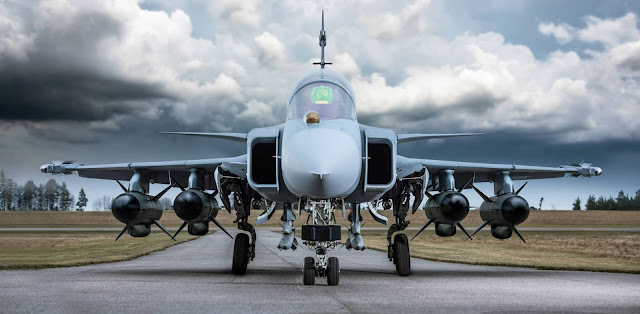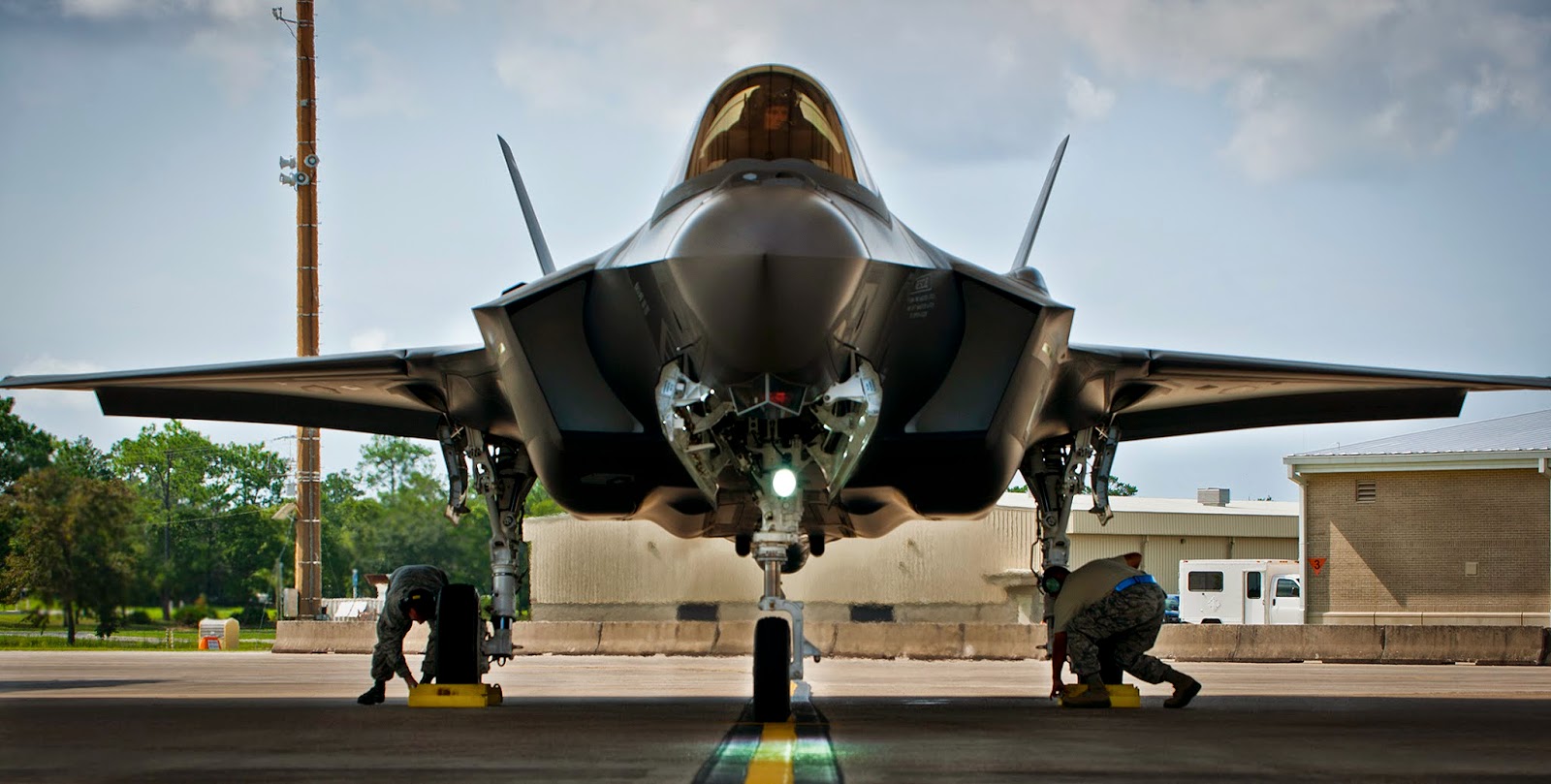Mythbuster: Single engine safety
 |
| Is one of these a deathtrap? |
"Time to start the show." Captain Buster said to himself as he throttled his trusty CF-18 Hornet demonstrator up and off the tarmac. Buster had a privilege of following The Snowbirds that day, so he knew he had his work cut out for him. "No problem." he thought, those 50-year-old CT-114s may have their precision, but the ol' Hornet had raw power on its side.
Captain Buster imagined he could hear the crowd's "Ooohhs!" and "Aahhhs!" over the roar of this after burning GE404 turbofans. Even after 30 years of service, the Hornet was still an impressive plane. Its high thrust and high angle-of-attack performance allowed it to perform maneuvers that seemed to contradict the laws of physics. "Not bad for an old girl..." thought Buster with a smile. "Even that duck seems impressed. Looks like its trying to get a closer look..."
That smile quickly turned clenched teeth when Captain Buster heard a "THUNK" quickly followed by alarm klaxons going off and lights flickering all over his cockpit. His controls violently started to shake as his CF-18 shuddered and then started losing altitude in a lazy roll. A quick scan of the gauges confirmed Buster's suspicions: That duck just wrecked one of his engines.
"MAYDAY! MAYDAY! MAYDAY!"
Thinking fast, Captain Buster immediately throttled up his one remaining engine while applying a slight amour of opposite rudder to compensate. With white knuckles and sweaty palms he managed to get his aircraft straight and level again. Gingerly, he slowed the aircraft down, extended his landing gear, and approached the runway. Landing a CF-18 on a single engine was not easy, and the pressure was made worse by the fact that a large crowd was uncomfortable close.
Sweating enough to saturate his flight suit, Captain Buster managed to put his wheels down on the tarmac and slowly bring his wounded fighter to a stop. His CF-18's jet roar was replaced with the sounds of approaching sirens as a fire crew raced to his smoking aircraft and started dousing it with foam.
Looking at the crowd, Captain Buster noticed that every single one of them was clapping their hands. Captain Buster shook his head and waved. "Good thing I still had that second engine." he thought. "This could have gone a whole lot worse for me AND them."
 |
| CF-104 aka: "The Widowmaker" |
Many believe that the lack of a second engine should automatically disqualify fighters like the F-35 and Gripen as Canada's CF-18 replacement. It simply is not worth the risk.
History would seem to back up this statement. Canada's last foray into the world of single-engined fighters, the CF-104 Starfighter, had a bit of a reputation. During its 25 year stint in the RCAF, the CF-104 had 110 major mishaps, resulting in 37 pilot fatalities. Clearly, it would seem that single engine aircraft are dangerous.
That is... Until one takes a closer look at both the numbers and the context surrounding the CF-104's dismal safety record.
The CF-104 Starfighter was used by the RCAF as a low-level strike and reconnaissance aircraft. This was completely at odds with the F-104's intended role as a high altitude interceptor. Its distinctive razor thin wings and needle-like shape made it an impressive performer in this role. These same features made it extremely unforgiving in other aspects, however. The F-104 became unflyable at high-angles of attack and it had a rather high stall speed.
Despite this, it was decided that RCAF CF-104s would be stripped of any air-to-air missiles, and even their 20mm cannon in earlier models. Instead, Canadian Starfighters would carry bombs, rockets, and even American supplied nuclear weapons. In hindsight, this decision to take a high-altitude interceptor, load it with heavy bombs, then force it fly at treetop level seems... Regrettable.
Believe it or not, the CF-104 actually had a superior safety record to its predecessor, the CF-86 Sabre (also a single-engine fighter). This despite the fact that the Sabre was flown at altitude.
Of the 110 major mishaps that occurred with the CF-104 Starfighter, only 14 were caused due to engine failures. The rest were caused by foreign object damage (FOD), pilot error, and the like.
 |
| F-105 Thunderchief |
The USAF had an aircraft that fulfilled a near identical role to the CF-104: The single-engined F-105 Thunderchief. Like the CF-104, it was armed with heavy bombs and flown at low level. Yet it had a much better safety record thanks to its more robust design an benign handling characteristics. Unfortunately, most F-105 losses were due to combat losses over Vietnam.
 |
| Guess which fighter has the better safety record... |
This is not the case however.
At the time, the F-16A was still considered a day fighter, tasked only with the air-superiority role. Earlier models lacked sufficient strike capability or even BVR weapons weapons like the AIM-7 Sparrow. It would not become the multirole fighter we know of today until the introduction of the F-16C in 1984.
The F/A-18 had all of these features from the start. Not only that, but it came with a more substantial offset package. General Dynamics (the F-16's manufacturer at the time) was already committed to the F-16's European partners.
Over the years, both aircraft have undertaken similar roles. Both aircraft have near-identical safety records as well. The F-16 actually has a lower accident rate than the F/A-18 when you consider that the Viper outnumbers the Hornet more than three to one. Early F-16 controversy was centered more on "wire chafing" causing its fly-by-wire controls to short out. Current F-16 problems tend to be more related to aging airframes and overworked maintenance personnel, rather than any engine defect.
It is reasonable to assume that the F/A-18 would have a spottier safety record than the F-16, regardless of engines. After all, the majority of F/A-18s operate from USN supercarriers, not pristine airfields. They also use different engines. Comparing their safety records to each other may not be fair.
Perhaps it would be more helpful to compare two similar aircraft, using identical engines, used for similar missions, by the same air force. Conveniently, there is an example of just that.
 |
| F-100 Super Sabre |
 |
| F-101 Voodoo |
 |
| F-102 Delta Dart |
What is telling is that the incident rate of both single-engine aircraft, the F-100 and the F-102, were near identical to the twin-engine F-101 when flown on similar missions. Keep in mind that these are all 50s era aircraft using technology far more primitive than that of today's jet engines.
While modern jet engines do look nearly identical to their older counterparts, they are in a different league when it comes to refinement, efficiency, and durability. Advances to metallurgy allows for more durable components. Computer aided design and manufacturing (CADCAM) allows for tighter tolerances and less manufacturing defects. Improved diagnostic systems allow the pilots and ground crew to locate issues before they become problems and, in many cases, before the aircraft even leaves the ground.
Modern aircraft engines are thoroughly tested to ensure continued operation throughout the harshest conditions. This includes water ingestion, hail, ice, and the occasional large bird. As you can see from the videos above, some damage may occur, but not enough to result in catastrophic failure.
So why do so many fighter aircraft have two engines?
Packaging and power.
You will notice that most two engine fighters are larger, multi-mission types that need to carry heavier loads yet still need lots of performance. The F-15C and F-14 need two large engines in order to carry copious amounts of internal fuel for an intercept mission. The F-111 and A-6 need two engines to carry copious amount of bombs. Even the F-18 needs its two engines because it is a heavier fighter (1.5 tonnes more) than the F-16, yet requires a slower stall speed.
 |
| The C-2 Greyhound can deliver Super Hornet engines. F-35 engines? Notsomuch. |
If you need a single engine to make more power, you simply need to make it bigger. Currently, the most powerful turbofan engine placed in a fighter is the F-35's P&W F135. At 43,000lbs of thrust (with afterburner), the F-35 makes more power than the both CF-18 engines put together. It is just slightly less than that of the Super Hornet's twin GE-F414s. While a single engine design does maker for less maintenance issues and such, it can cause a new set of issues. For example, the F-35C's engine is simply too big to fit inside the USN's C-2 Greyhound transport aircraft. This makes aircraft carrier deliveries a bit tricky. Luckily, the Super Hornet's smaller engine fits just fine.
 |
| Redundancy? Or just ridiculous? |
Twin-engine aircraft are built as twin-engined aircraft. Both turbines work together to propel the aircraft as a single propulsion system. One engine does not work as a "spare" to the other. A catastrophic failure in one would result in a near-instantaneous sudden loss of power and an extremely ill-handling airplane. The malfunctioning engine would act as "dead weight", contributing to extra drag while adding power to the opposite engine to compensate would result in the aircraft rotating on its yaw axis.
On top of all this, there is the underlying cause of the engine malfunction to worry about. A fire or structural failure could easily spread to the remaining engine. As could a loss in fuel pressure. In some cases, the loss of one engine is simply a precursor to the second engine following suit.
 |
| Thankfully, the pilot managed to eject. (Photo credit to William Gilson for this one-in-a-million shot!) |
My little fictional story at the start of this post was very loosely based on real life events. While practicing for an air show in Lethbridge, Alberta, Captain Brian Bews' CF-18 demonstrator suffered from a starboard engine failure due to a stuck fuel piston. This kept the right engine from throttling up alongside the port (left) side engine when maximum afterburner was selected.
“The large thrust imbalance between the left and the right engines caused the aircraft to depart controlled flight and the aircraft was unrecoverable within the altitude available.”Despite Captain Bews' best efforts, he could not regain control of the aircraft. Given the nature of the problem, there is little guarantee he could have even if the altitude was higher.
 |
| Single engined Saab Gripens flying over the Alps. |
Are twin-engined aircraft safer? Maybe... But not significantly so.
The single-engined Saab Gripen (which uses a variant of the F404 used in the CF-18) has enjoyed a near flawless safety record. Out of a mere 11 major incidents, none were engine related. This, despite the fact that Sweden operates the Gripen in severe conditions with one Gripen airbase located in the arctic circle. They even perform arctic patrols with them and everything.
Too bad Canada would never buy a European-sourced aircraft for the RCAF. Would they?
Tune in next week.



Comments
Post a Comment